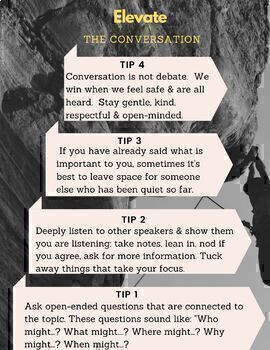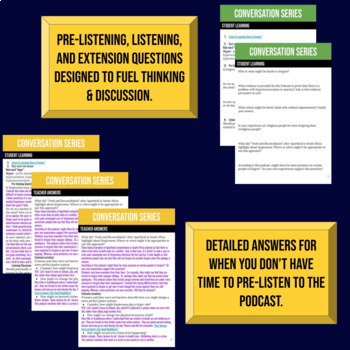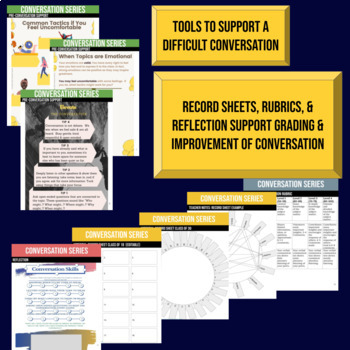#Metoo & Murder in the Military- Listening, Short Answer, & Conversation
- Google Slides™

Description
This podcast episode is about #MeToo and sexual harassment in the Military. It details two important #MeToo cases, including the murder of Vanessa Guillen at Fort Hood. If you want to integrate more timely and essential discussions about current events, but you don't feel you are the expert, try this task with your students.
It may distress some audiences, so please use your professional discretion and the supporting documents provided that aid tough conversations. There is a transcript for this episode.
This document contains:
1) Detailed teacher notes:
- Materials, timelines, tactics, Index with hyperlinks.
2) Bonus Materials to support tough conversations & emotions + mini-lessons such as root words, as needed.
3) Specific pre-listening, discussion questions, and extension questions.
4) Easy-marking rubric for class discussion.
5) Students reflect on their own conversation skills.
6) Detailed teacher answer key (so you don't have to listen to the podcast!)
7) Example record sheet
8) Templates to make a visual of the conversation (editable and non-editable for large and small classrooms). These templates support your marking and encourage student engagement. They are also helpful to show to parents to better understand their child's participation in the class.
If this subject and format worked for you and your students, please consider:
BIPOC Lives Matter & Social Justice Focus:
Black Lives Matter: Breonna Taylor
Systemic Racism: “Starlight Tours-” Systemic Racism in Canada
Wrongly Accused by an Algorithm: Facial Recognition & Policing
“Stay Black and Die": A Recent History of BLM
Vanessa Guillen Murdered- Latinx in the Military
Forgiveness & How it is Missing from the Justice System
Disability Rights- A History
Police and People with Mental Illness
Dr. Martin Luther King Jr - MLK - Coretta Scott King - Civil Rights
Colin Powell- Reluctant Warrior
This is the third topic in my Conversation Series. All topics will engage, interest, and yield an instant oral communication mark in a less threatening situation than a presentation or speech. Should you decide to host a weekly conversation supported by these materials, you will help students to value their own voice, improve their communication skills, and you will save yourself hours of time.
Future posts in the Conversation Series will each have a different issue, student discussion sheet, and answer key. But the support materials (such as the templates) will be the same.
If you want more work similar to this topic and style, consider the High Interest and Skills Unit Series:





